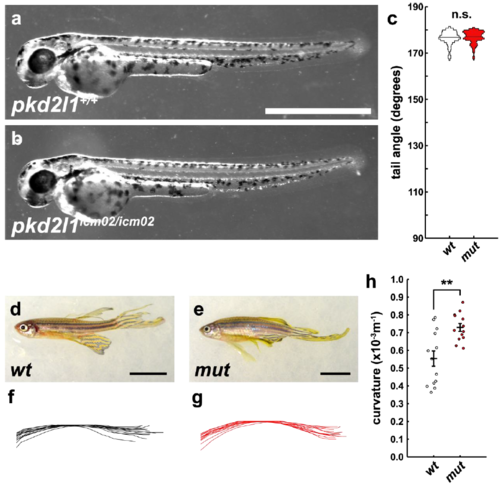Fig. S3
|
After three generations, pkd2l1icm02/icm02 fish continue to develop kyphosis as adults. (a) 48 hpf wild-type larva exhibiting normal development and a near 180° tail angle. Scale bar: 1 mm. (b) No difference is observed in the 48 hpf pkd2l1icm02/icm02 larvae. (c) Violin plot of tail angles comparing a wild-type clutch to a mutant clutch at 48 hpf; there is no significant difference in tail angle. (d) Wild-type adult fish at 12 months. Scale bar: 1 cm. (e) pkd2l1icm02/icm02 adult fish at same age. Scale bar: 1 cm. (f) Traces of spinal curvature derived from widefield images taken of wild-type adults. (g) Same traces from pkd2l1icm02/icm02 mutant adults. (h) Quantitative comparison of spinal curvature between wild-type and mutant adults at 12 months. Mutant spinal curvature is significantly greater (p = 0.0013, two-sample t-test). Error bars represent s.e.m. |

